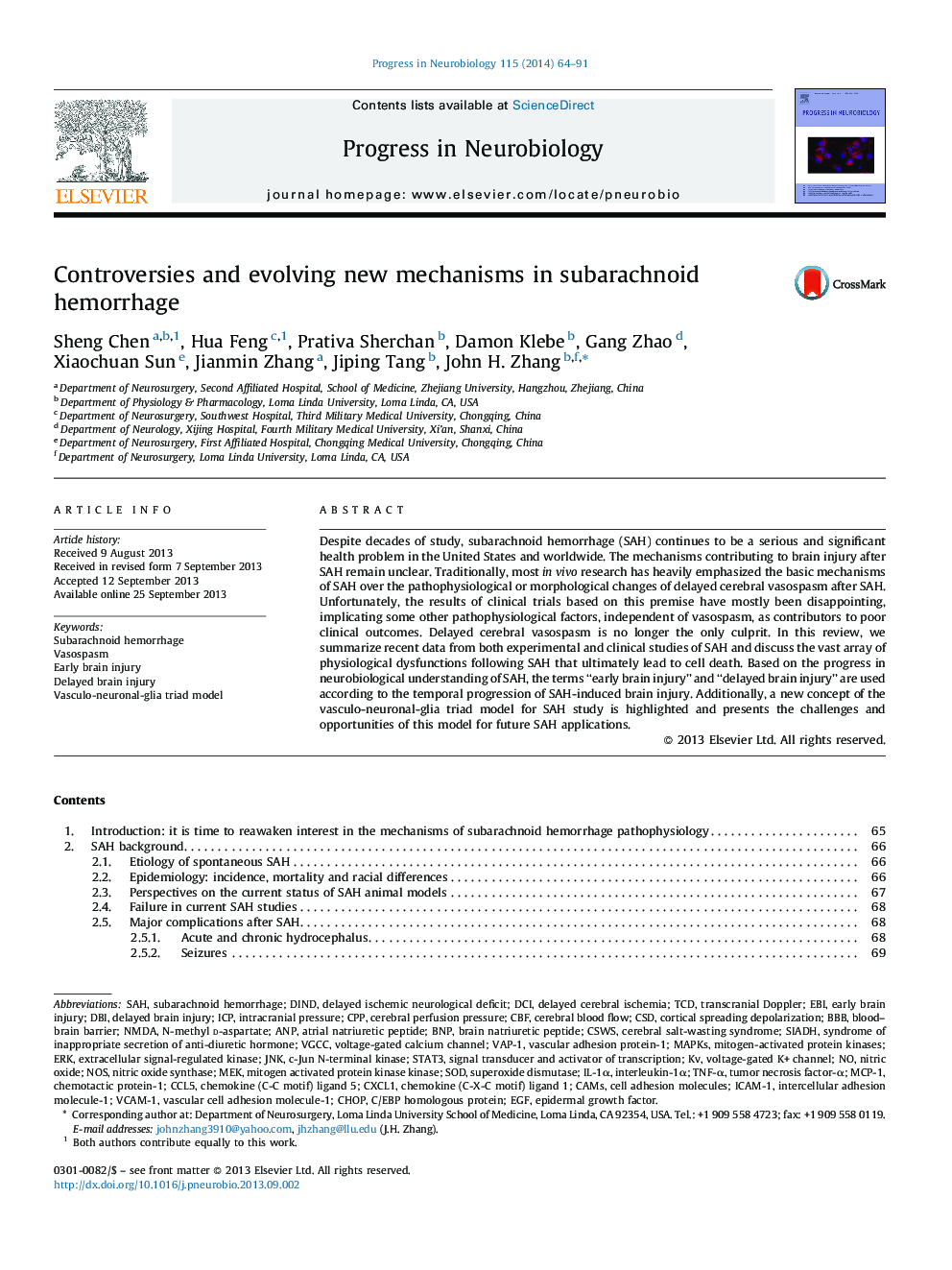| Article ID | Journal | Published Year | Pages | File Type |
|---|---|---|---|---|
| 6286497 | Progress in Neurobiology | 2014 | 28 Pages |
Abstract
Despite decades of study, subarachnoid hemorrhage (SAH) continues to be a serious and significant health problem in the United States and worldwide. The mechanisms contributing to brain injury after SAH remain unclear. Traditionally, most in vivo research has heavily emphasized the basic mechanisms of SAH over the pathophysiological or morphological changes of delayed cerebral vasospasm after SAH. Unfortunately, the results of clinical trials based on this premise have mostly been disappointing, implicating some other pathophysiological factors, independent of vasospasm, as contributors to poor clinical outcomes. Delayed cerebral vasospasm is no longer the only culprit. In this review, we summarize recent data from both experimental and clinical studies of SAH and discuss the vast array of physiological dysfunctions following SAH that ultimately lead to cell death. Based on the progress in neurobiological understanding of SAH, the terms “early brain injury” and “delayed brain injury” are used according to the temporal progression of SAH-induced brain injury. Additionally, a new concept of the vasculo-neuronal-glia triad model for SAH study is highlighted and presents the challenges and opportunities of this model for future SAH applications.
Keywords
N-methyl d-aspartateMCP-1CBFNMDAVAP-1SIADHCSDDCIBNPVCAM-1STAT3Ccl5CXCL1DBISAHEBIVGCCDINDIL-1αNOSEGFJnkCPPANPICPTCDCSWSICAM-1ERKC/EBP homologous proteinc-Jun N-terminal kinaseCAMsMAPKsMitogen activated protein kinase kinaseEarly brain injuryDelayed cerebral ischemiaInterleukin-1αtumor necrosis factor-αCHOPcerebral blood flowSubarachnoid hemorrhageTCD, Transcranial DopplerSODBlood–brain barrierBBBSuperoxide dismutaseepidermal growth factorTNF-αintracranial pressureCerebral perfusion pressureSignal transducer and activator of transcriptionMEKcell adhesion moleculesintercellular adhesion molecule-1vascular cell adhesion molecule-1Nitric oxidenitric oxide synthaseVasospasmVascular adhesion protein-1cortical spreading depolarizationbrain natriuretic peptideatrial natriuretic peptideVoltage-gated K+ channelvoltage-gated calcium channeldelayed ischemic neurological deficitchemokine (C-C motif) ligand 5chemokine (C-X-C motif) ligand 1extracellular signal-regulated kinasemitogen-activated protein kinases
Related Topics
Life Sciences
Neuroscience
Neuroscience (General)
Authors
Sheng Chen, Hua Feng, Prativa Sherchan, Damon Klebe, Gang Zhao, Xiaochuan Sun, Jianmin Zhang, Jiping Tang, John H. Zhang,
